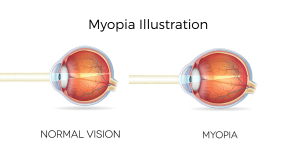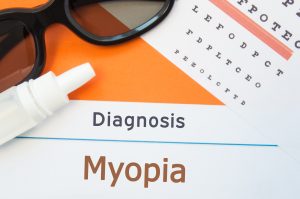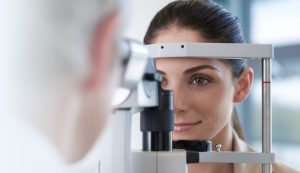Introduction
Nearsightedness, also known as myopia, is a prevalent vision issue affecting individuals worldwide. This article provides a comprehensive exploration, shedding light on its symptoms, diagnostic procedures, and various treatment options available.

Understanding Nearsightedness
Nearsightedness occurs when distant objects appear blurred due to a refractive error. Unlike a healthy eye, where light focuses directly on the retina, results in the focal point occurring in front of the retina. This discrepancy is often attributed to the shape of the eye.
Recognizing Symptoms
The symptoms of nearsightedness are distinct and include:
- Trouble seeing distant objects: Individuals may find it challenging to focus on things that are far away.
- Squinting: A common reflex to enhance clarity.
- Eye strain: Prolonged periods of viewing distant objects may lead to tired or sore eyes.
While some nearsighted individuals may experience headaches, it is not a universal symptom. Notably, mild nearsightedness might not manifest noticeable symptoms, underscoring the significance of regular eye examinations.

Assessing Risk Factors
While nearsightedness can affect anyone, certain risk factors increase the likelihood. A notable factor is a familial predisposition, where having nearsighted family members heightens the risk. Onset typically commences between the ages of 6 and 14, progressing until the early twenties. Intriguingly, spending more time outdoors during childhood has been associated with a reduced likelihood of developing nearsightedness.
Unveiling the Causes
Nearsightedness stems from structural anomalies in the eye. This can manifest as an elongated eyeball or irregularities in the shape of the cornea (the clear front layer of the eye) or lens (an inner part of the eye responsible for focusing light). These structural aberrations lead to light focusing in front of the retina, causing distant objects to appear blurry.

Diagnosing Nearsightedness
Comprehensive eye exams, known for their simplicity and lack of pain, are instrumental in diagnosing nearsightedness. Regular eye check-ups play a crucial role in identifying vision issues early on, allowing for prompt intervention and correction.

Treatment Modalities
The primary treatment options for nearsightedness encompass:
- Eyeglasses: Prescription lenses tailored to correct vision and provide clarity.
- Contact Lenses: Lenses placed directly on the eye surface for vision correction.
- Surgery: A viable option for adults, involving corneal reshaping to enhance the eye’s ability to focus light accurately. Treatment for other health Problems

Comparative Table: Treatment Options
| Treatment | Description |
|---|---|
| Eyeglasses | Prescribed lenses for clear vision |
| Contact Lenses | Lens placed directly on the eye surface |
| Surgery | Corneal reshaping for improved focus (mainly for adults) |
Conclusion
Understanding the symptoms, risk factors, and available treatments empowers individuals to address nearsightedness effectively. The proactive approach of regular eye check-ups is fundamental in maintaining optimal eye health and catching vision issues in their early stages. By demystifying nearsightedness, this article aims to contribute to increased awareness and informed decision-making regarding eye care.












